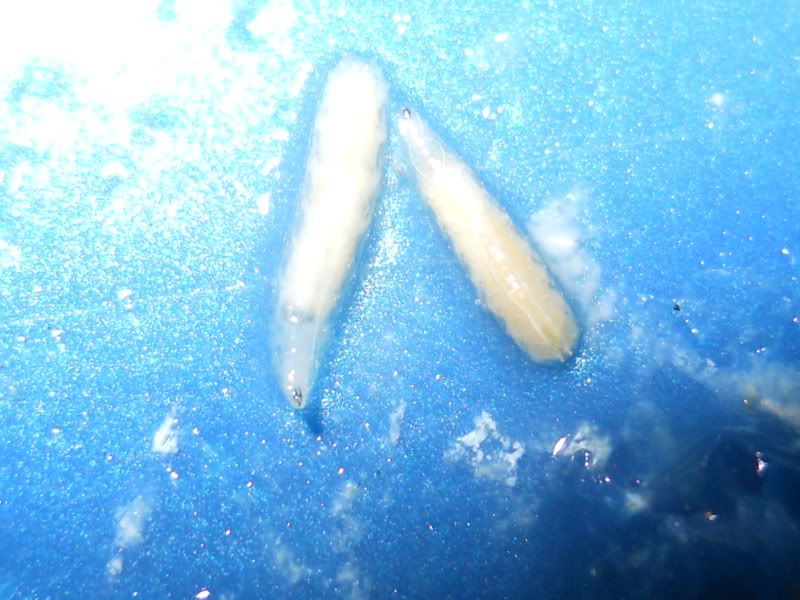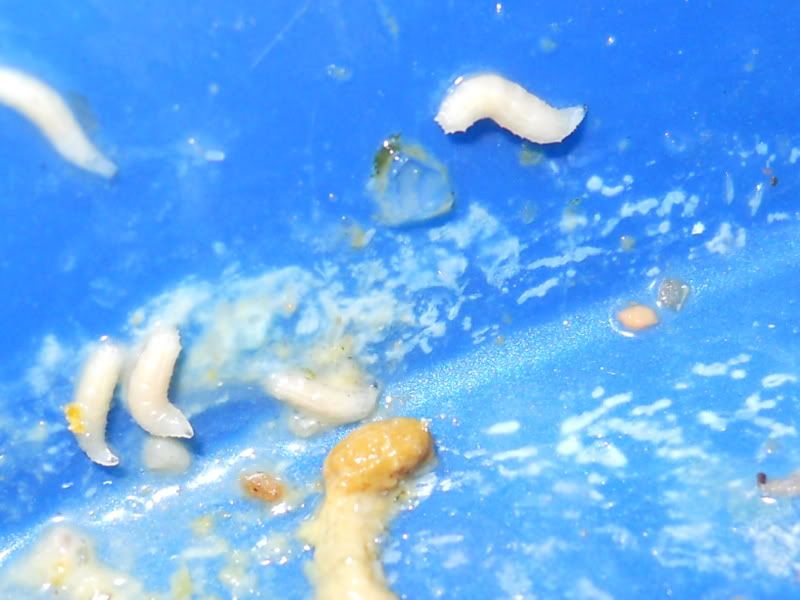Herpetologydude
Arachnosquire
- Joined
- Feb 16, 2010
- Messages
- 94
Hey everyone,
I have been raising a colony of B.discoidalis for several months now. Throughout the end of October up to today I am finding a constant influx of Small white what I assume are fly larvae. I'm also noticing a high mortality rate in my adult roaches, along with some levels of wing disfurgement when adults molt into their mature stage.
Any ideas on these problems? Could they connect to humidity? Any idea on what kind of Larvae these are and if they are parasitic? I have cleaned out my container twice in two weeks washed it down and still they continue popping up, I'm assuming the adult flies are gaining access through an open window or something unless these are indeed parasites.
Here are some (poor quality) pictures of the larvae, the camera wasn't cooperating well tonight :/
Thanks for any future replies!


I have been raising a colony of B.discoidalis for several months now. Throughout the end of October up to today I am finding a constant influx of Small white what I assume are fly larvae. I'm also noticing a high mortality rate in my adult roaches, along with some levels of wing disfurgement when adults molt into their mature stage.
Any ideas on these problems? Could they connect to humidity? Any idea on what kind of Larvae these are and if they are parasitic? I have cleaned out my container twice in two weeks washed it down and still they continue popping up, I'm assuming the adult flies are gaining access through an open window or something unless these are indeed parasites.
Here are some (poor quality) pictures of the larvae, the camera wasn't cooperating well tonight :/
Thanks for any future replies!


